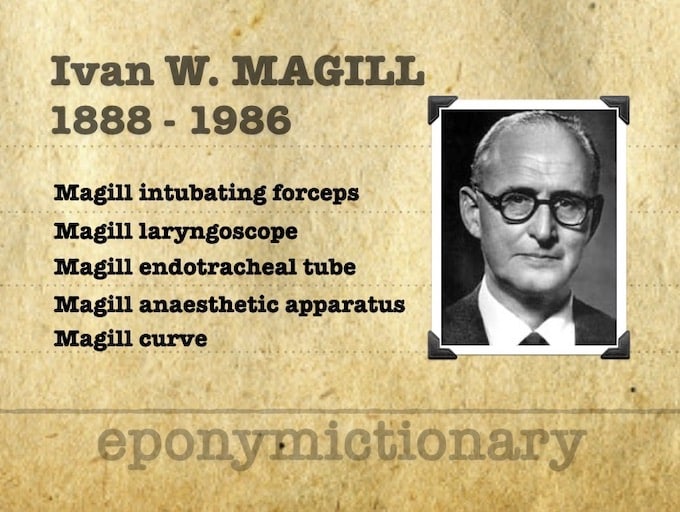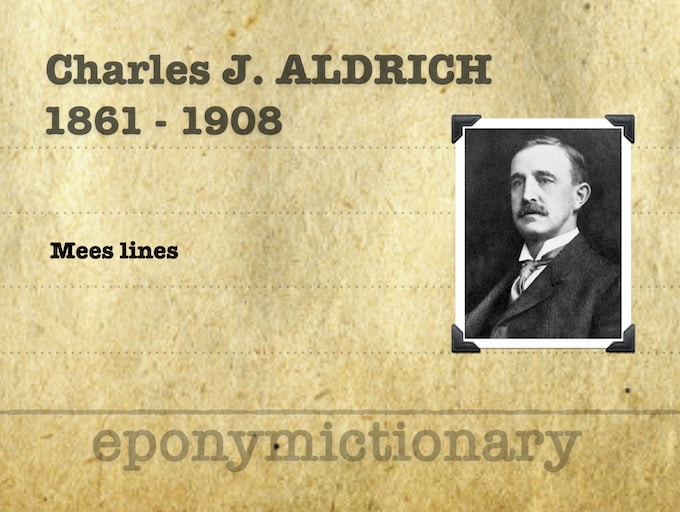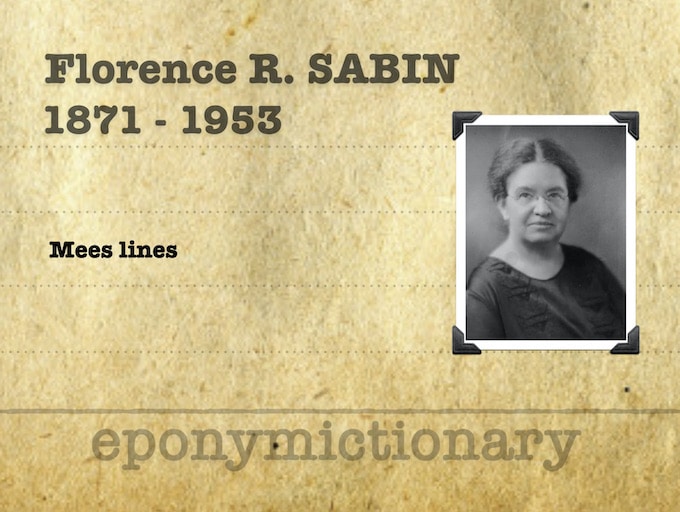Harry Angelman
Harry Angelman (1915-1996) was an English paediatrician
Harry Angelman (1915-1996) was an English paediatrician

V.Ray Bennett (1922 – 1996) was an American engineer whose contributions to respiratory medicine resulted in saving thousands of lives during the Polio epidemic

Sir Ivan Whiteside Magill (1888 – 1986) was an Irish Anaesthetist. Epomnymously affiliated with various anaesthetic devices such as the Magill forceps

Josef Jadassohn (1863 - 1936) was a German dermatologist. Jadassohn-Lewandowsky syndrome (pachyonychia congenita) (1906); Borst-Jadassohn; Jadassohn-Tièche blue naevus; Jadassohn-Bloch Technique

Felix Lewandowsky (1879-1921) was a German dermatologist. Jadassohn–Lewandowsky syndrome, Lewandowsky’s syndrome, Lewandowsky–Lutz dysplasia and Lewandowsky tuberculid

Charles John Aldrich (1861-1908) American neurologist. Provided early description of Mees lines he termed 'Leuconychia striata arsenicalis transversus'

Florence Rena Sabin (1871-1953) American anatomist and medical researcher. Early description (1900) of Mees lines of the fingernails secondary to arsenic poisoning

Frank Chambliss Johnson (1894 – 1934) was an American pediatrician. Along with Albert Mason Stevens (1884 – 1945), is eponymously affiliated with Stevens-Johnson syndrome

Albert Mason Stevens (1884 – 1945) was an American surgeon. Eponym Stevens-Johnson syndrome (with Frank Chambliss Johnson)

Terry's nails are a type of apparent leukonychia, characterized by ground glass opacification of almost the entire nail, with a narrow band of normal, pink nail bed at the distal border, and often with obliteration of the lunula.
Biography Born on May 4, 1907 1929 – BA 1932 – MRCS LRCP 1933 – MA 1934 – MB BCh 1935 – MRCP 1936 – MD 1943 – FRCP Died on May 4, 1954 Medical Eponyms Lovibond angle (profile sign)…

William Bennett Bean (1909-1989) was an American physician, medical historian. Bean syndrome (1958) [Blue rubber bleb nevus syndrome] and spider naevi